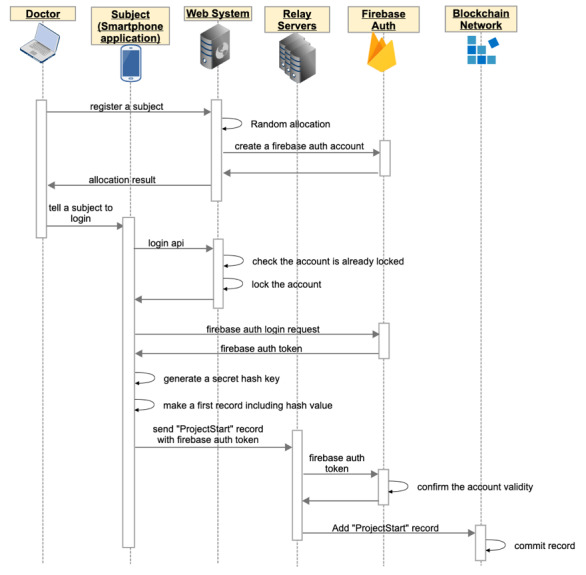Figure 2.

When a participant first visits the hospital, a medical doctor decides if they fit the eligibility criteria. After obtaining informed consent, the doctor registers the patient to the clinical trial using a web-based allocation system. The system automatically creates an account for the participant, and the doctor gives the account to the participant. The participant downloads the app to their smartphone, and they can log in to the app using the account created by the doctor. When the participant first logs in to the app, the account is locked to prevent impersonation, and the secret hash key is then generated. The secret hash key will be preserved in the client app until the participant completes the trial. Using the secret hash key in the client device, the app calculates a hash value. The app sends the first record to the blockchain network via relay servers, and the data is registered in the tamper-resistant blockchain system.
